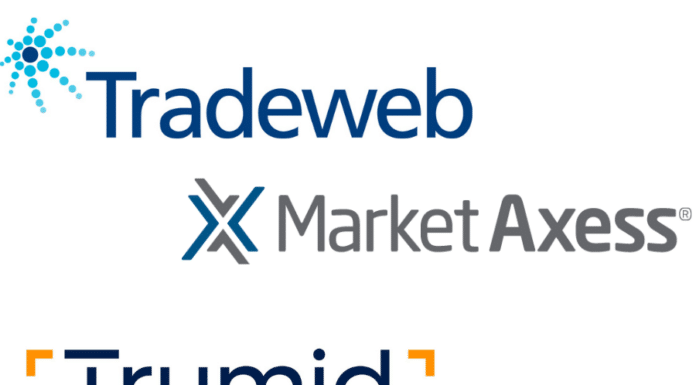
Juan Landazabal, global head of Fixed Income and Foreign Exchange Trading at Deutsche Asset Management describes the internal and external pressures that are shaping the role of head trader.
Juan Landazabal is global head of Fixed Income and Foreign Exchange Trading at Deutsche Asset Management. His team includes approximately 25 fixed income traders/sector managers across Frankfurt, Zurich, London, New York and Boston, who use the Aladdin order management system.
He joined the firm in 2013 with 19 years of industry experience under his belt. Previously he had worked as head of Fixed Income Trading at Fidelity Investments International, director of Credit Products in the Capital Markets Division at Caja Madrid and as a vice president in Debt Capital Markets at Santander Investments in New York and Madrid.
He holds a BA in Economics from Kingston University in London, and an MSc in International Banking & Financial Studies from Heriot-Watt University in Scotland.
Are trading desks the agent of change or they being driven to change by portfolio managers and the management team?
I think the biggest drive has been from the trading desk. We have been in the thick of it and I think now it’s percolated upwards. Recent events, like firms gating investors, things like that make headlines. Some PMs still haven’t quite transitioned, they are aware of this but when it comes to their trades they are still looking at the screen prices, managing portfolios with 200 securities assuming that liquidity is going to be there. I don’t think what we are seeing in the marketplace right now is translating into investment processes in terms of how to structure portfolios.
Could you give an example?
There has to be a much greater differentiation between what is an alpha position or a beta position, and what the cheapest way of sourcing that beta is. In the past you talked about total return swaps, CDS indices, or even fixed income ETFs. The conversations were always, ‘Yes it could be a good proxy, easy to put on and take off but my tracking error would be too big’. Well, guess what, now your liquidity risk is much bigger than any tracking error. So I think that needs to percolate into the investment process.
If you were to put the challenges you currently face into different boxes what labels would you put on those boxes?
Regulatory compliance as one. Team preparedness, readiness and wellbeing as another. Client satisfaction is a very important part of the role. And finally ‘trouble-shooter’.
Which do you think is the most challenging?
I would say the regulation and the team management aspects are the most challenging. Client satisfaction has challenges but it’s more manageable as is the trouble-shooting. The two biggest are the regulatory challenges that we face and managing team complexity.
How do you think about risk in your role?
We are the epicentre of the investment process meeting the market. Inherent in that is a lot of risk. There is more focus on best execution in a market where liquidity has become more challenging, especially in a large asset management company like ours where we often trade very large sizes. We have to work those orders, deciding when and how to trade, often ‘non-comp’. That’s where the risk comes; can we prove that we are trading at the right price? Are we giving proper feedback to portfolio managers in terms of how they can trade their positions? There is also the very important value-add component of our jobs, market information and intelligence, we help with the relative value process and security selection as well.
How might you characterise the stages that trading desks go through as they evolve to the point of being semi-autonomous?
I don’t think the end goal is to get desks to be autonomous per se. The end goal is to get the buy side to be more proactive in price-making. That doesn’t necessarily mean desk autonomy. I see it more as a framework of best execution. One has to develop the valuation framework which gives everybody – the portfolio manager, the trader – the confidence that we are obtaining the best possible price under the circumstances. We are working on getting a lot of real-time price information from several sources at point of trade, we are trying to factor in liquidity scores and trade sizes as well into that. In essence, we are taking a leaf out of the equity book and trying to come up with a form of expected slippage to the screen price given a particular trade and volatility conditions at the time.
How far is that progressing?
The only piece in the puzzle we are really missing here is trade volume on an ISIN basis; frequency of trading, aggregate volume and also the size buckets as well. If we managed to get that, we could plug in our own volatility measure for the instrument and the market at the time, and then it would be quite easy to calculate the expected price or slippage. For example, say you had 20 million of a bond to sell and you negotiated a non-comp bid for the whole size at 98.75 but the screen price is 100 in half a million. Is this a good price and are we fulfilling our best execution requirements? The answer is probably yes but it is not that easy to prove. Now you introduce the slippage model that calculates that your 20 million shape should be absorbed over a 3 day period and given the bond’s beta and current market volatility that would result in a fair market price of 98. Now you have a framework, besides trader/PM gut instinct, that allows you trade larger sizes more confidently. That is what we are trying to develop; so it’s not autonomy for autonomy’s sake. It’s more providing that framework so that as a whole the buy side can become more proactive in price making, and transition into proactively providing liquidity to the market place and not just taking it.
If it hasn’t been done before doesn’t this sort of process carry a lot of risk and challenges?
Challenges more than risks I think. There are some industry solutions and very good data providers, some of the traditional ones are trying to enhance [their offering] with these liquidity characteristics attributions. There is market information you can get from TRACE, it’s something that we will be able to get from Europe once MiFID II comes around – that’s one of the positive things about MiFID.
How is the value the fixed income trading desk provides to portfolio managers changing?
At one end of the spectrum you have execution only, on the other end you might have traders with quite a lot of autonomy and maybe even P&L. We are somewhere in the middle, providing good market intelligence, assisting with relative value, security selection as well as best execution.
Across the industry, what has changed is that the trading-specific component has gone up in importance quite simply because it’s harder to trade. It’s almost futile coming up with the best ideas if you can’t put them on. So finding that liquidity, having that dialogue about how to trade a block, scale into a position or use of alternative instruments that achieve the same type of exposure is becoming more and more relevant. Market regulation also adds to that importance as traders need to be aware of elements such as security reporting, counterparty classification and how that could affect prices as well as what needs to trade where to avoid breaching regulation.
As markets change and teams respond do you see any gaps opening between demand and capability?
One point of pressure is where the market is quite transparent about prices for small clips and that gets extrapolated to an outsized market size; that’s where you are going to get difference of opinions or expectations of what the PM or end client might think they can or should get, and what is really achievable. That could be quite contentious.
How do you see the new electronic platforms affecting the market?
There are a lot of initiatives out there; some form of aggregator would help. One or two platforms are thinking of developing in that direction which could be quite powerful because IT budgets are stretched and real estate on screens is stretched. The way information is transmitted in fixed income is very old school so we are investing a lot of time and effort on initiatives like Neptune which are about getting more pre-trade transparency, about tailor-made axes being sent directly into our blotters and ultimately trading with existing liquidity providers more effectively, because you have the relevant information. There are also auction-type solutions which could work for very liquid products as they create focus and drum up liquidity at a given moment in time. Open order books are going to struggle the most. You need very liquid markets for that and fixed income markets are typically at the opposite end of the spectrum.
There are a number of long-standing buy-side traders in the business, and many traders moving to the buy side with sell-side experience; how do you see the make-up skill sets changing?
There are benefits in both; the long-standing traders for fiduciary agency trading and knowledge of how relationships work buy- to sell-side are very important. I think the new skill set that comes with a sell-side trader who’s more accustomed to risk-taking complements the other, and those skill sets are going to be very useful as we evolve into more price making liquidity providers.
Can you see a point where the buy side might make prices?
Totally. Substantially more than today with a combination of technology and with a combination of new talent in the seat. But it will take a while because the investment process is so engrained that we are never going to get full autonomy on the desk. We are not going to substitute the portfolio managers. It is just going to take a while to figure out what that equilibrium looks like. In the meantime you are still going to need the street for the bulk of the trading
How much are all-to-all markets a solution?
All-to-all trading from buy side to buy side is a nirvana that’s not here today and will not be here in the near future, in my mind. We are not price makers but price takers in a market with structurally fragmented liquidity due to the number of issuers and bonds. There are some new buy-side entrants in the market, more prop type in nature rather than traditional money managers, but by and large they add a very thin layer of liquidity to the market at small sizes that is very ‘here today gone tomorrow’.
What does a head of desk look out for during a period of market structural change?
I am very-focussed on the controls and procedures of the investment process and traders being deeply involved with the upstream investment process – providing market colour, helping with security selection, and relative value. More autonomy when it comes to trading in and out of positions as long as controls and procedures are in place. With regards to the new platforms, a key element is their integration into our order management system as I want to integrate within one ecosystem. My worst-case scenario is different traders operating on different platforms and re-keying data. Anything we do in terms of new market structure has to come with a really robust workflow around straight-through-processing, reporting with 100% visibility of where our trades are, and the context of those trades. The protocol, the governance, the financial stability of some of these platforms and the capital behind them are all important elements but process is control number one.
©TheDESK 2016
©Markets Media Europe 2025







